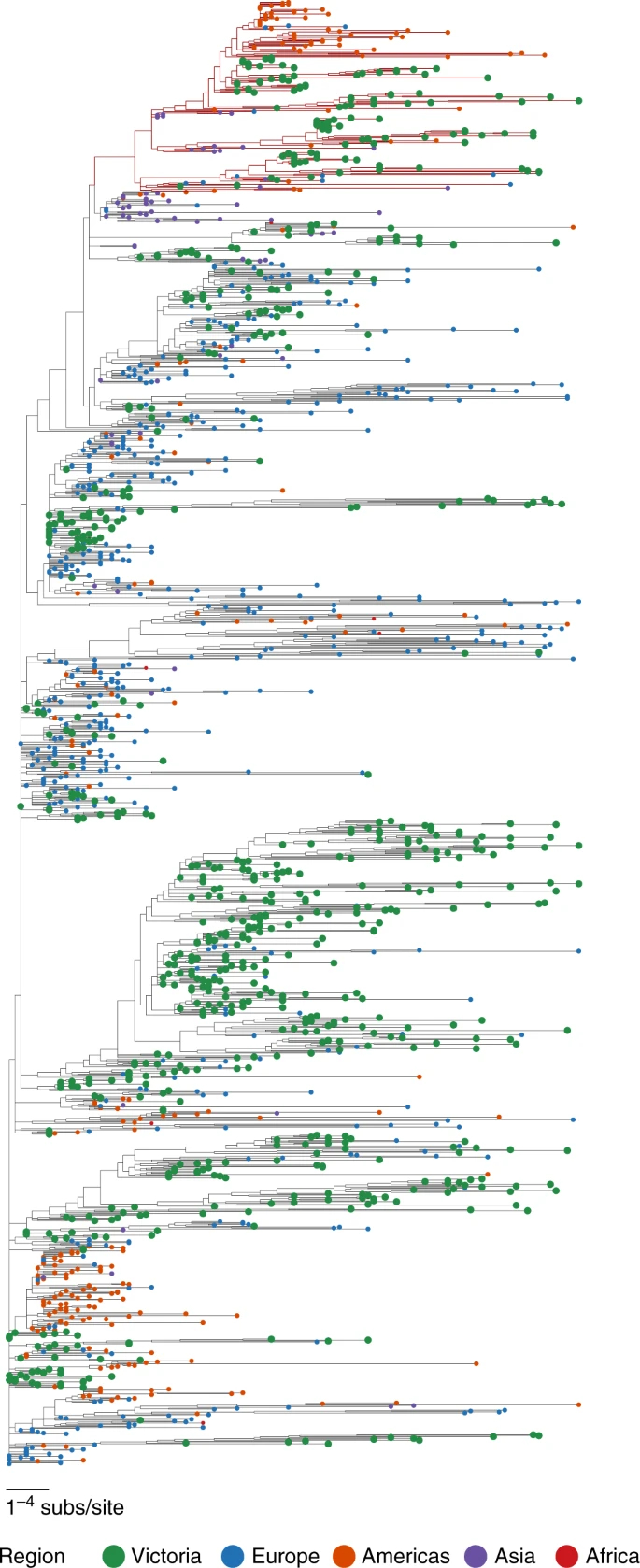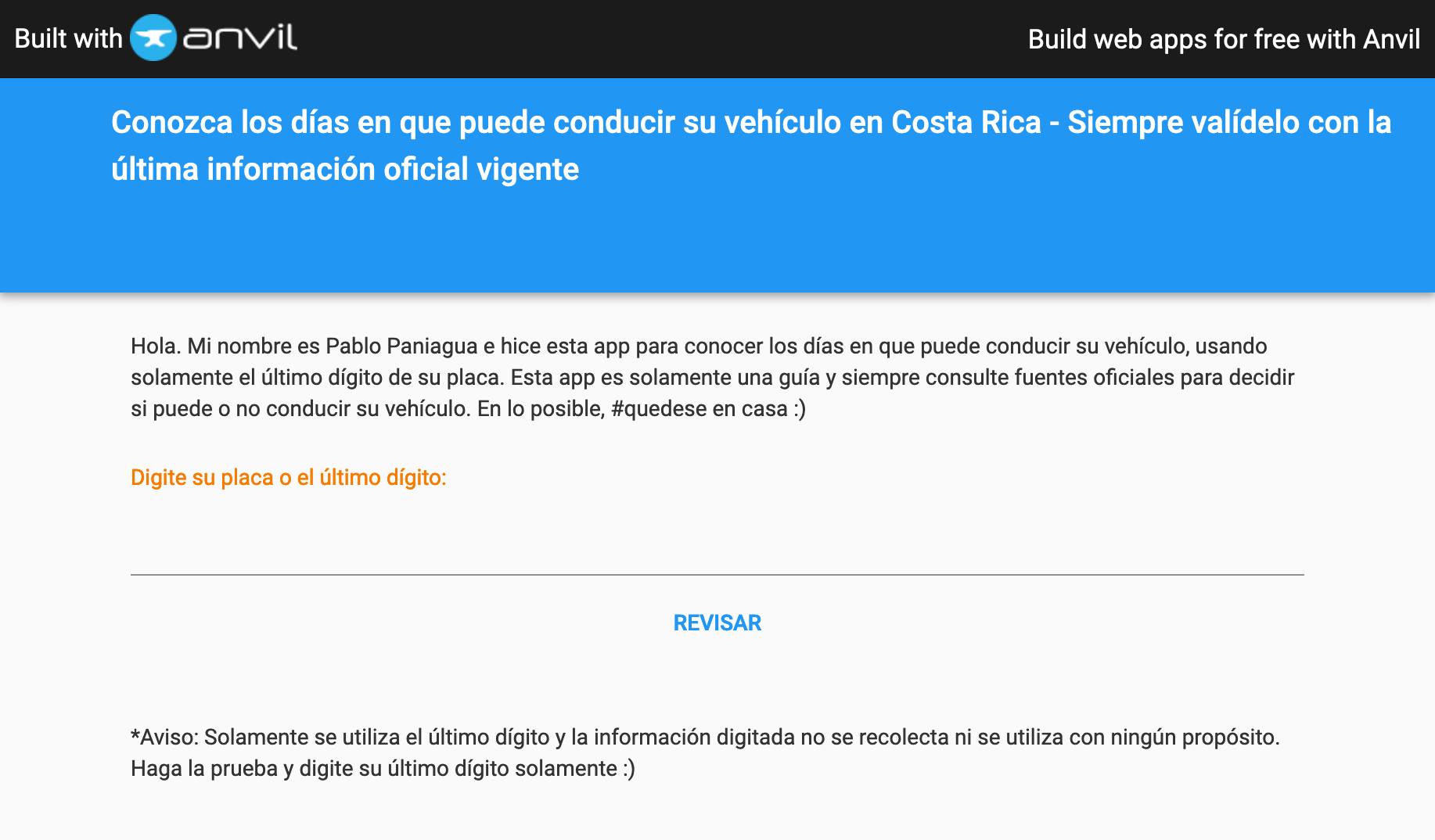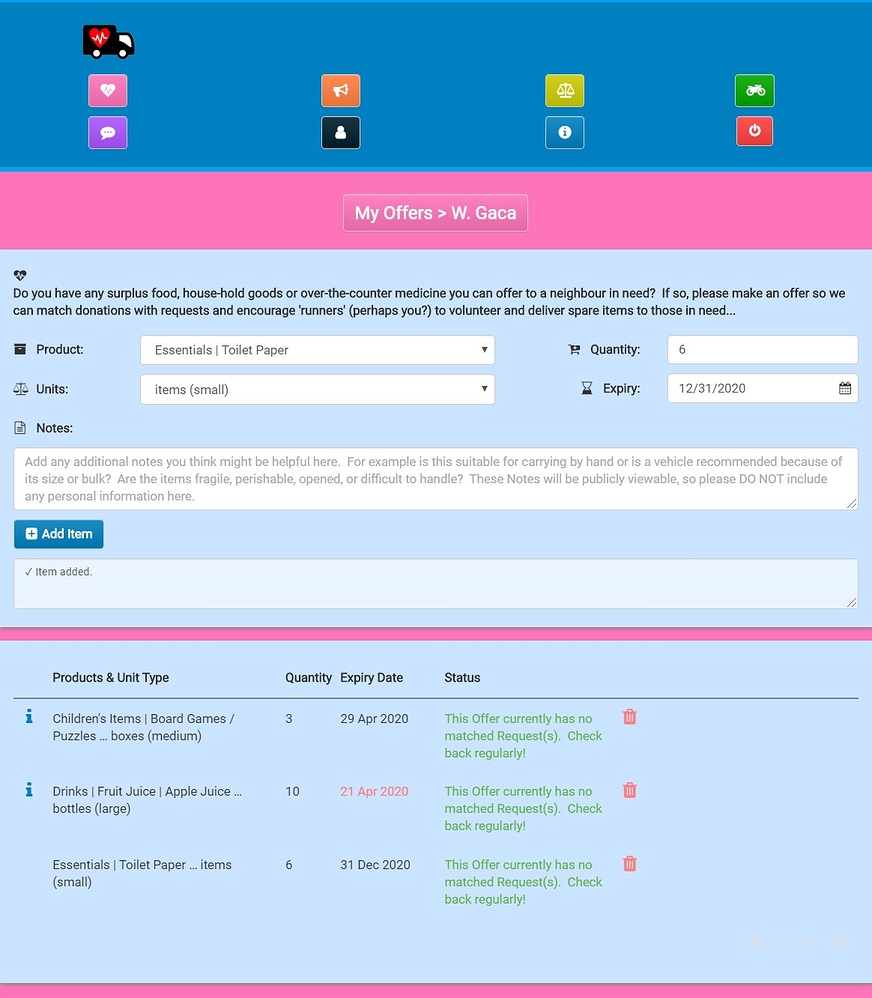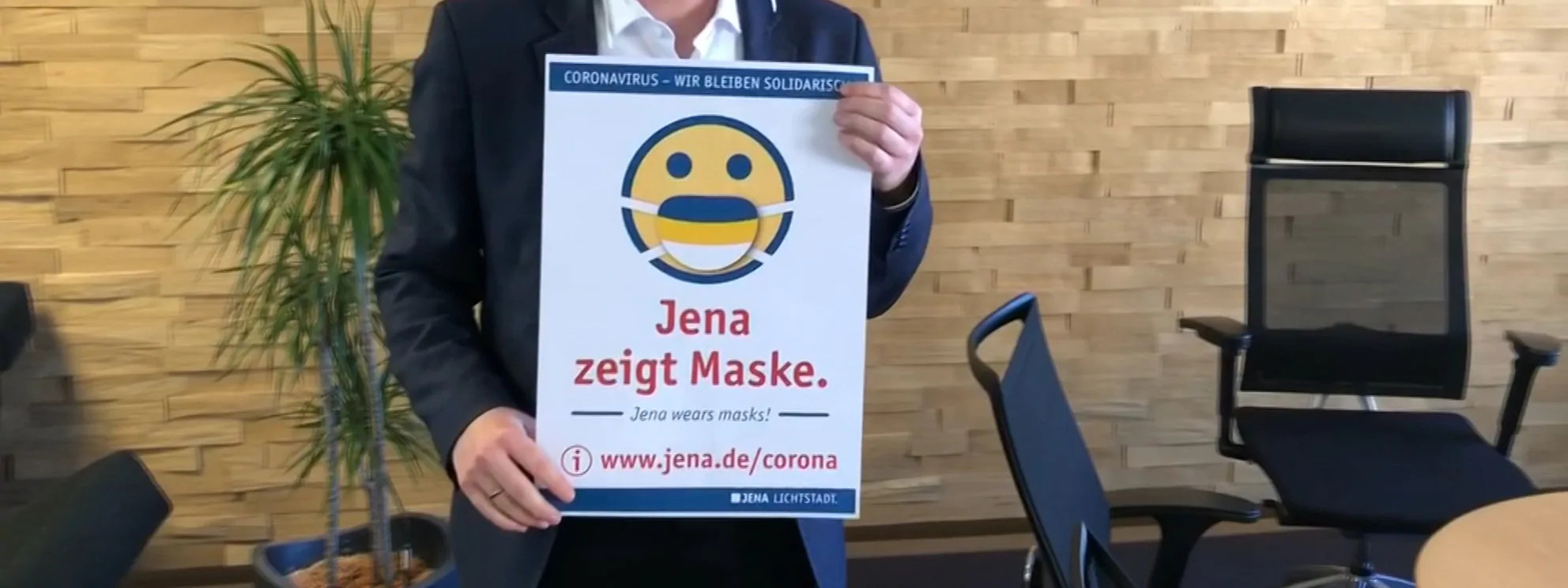In this post, we’ll take a look at some of the tools being built with Anvil to help people around the world deal with the pandemic. We’ll cover:
- Tracking the Spread of COVID-19 in Australia
- Clarifying Lockdown Restrictions on Vehicles in Costa Rica
- Sharing Key Items with Those in Need in London
- Real-time Newsroom Collaboration in Kosovo
- Modelling the Impact of Masks in Germany
Tracking the Spread in Australia
The battleground of the COVID-19 pandemic is public health: tracking and containing outbreaks of disease. Anders Gonçalves da Silva is a bioinformatician at the MDU Public Health Lab in Australia.
Anders Gonçalves da Silva
Bioinformatician, MDU

Phylogenetic tree from the lab’s paper in Nature
Anders normally spends his time building software to assemble and process the genomes of bacteria like salmonella, listeria and other nasties, to detect outbreaks. The MDU then shares that information as quickly as possible with consumers and manufacturers.
These days, his focus is COVID-19. The MDU was the first laboratory outside China to recreate and analyze the coronavirus.
With the help of Anvil, they are using all the information that modern gene sequencing can give us to find out how the virus is spreading and help Australia - and the world - keep it under better control.
Modern genetic sequencing is powerful enough to allow the MDU lab to track the changes in COVID-19 DNA over generations using samples from patients, and draw phylogenetic trees.
This allows them to detect what strains are circulating in Australia and narrow down where they came from.
Clarifying Lockdown Restrictions on Vehicles in Costa Rica
Starting in April the Costa Rican government imposed national vehicular restrictions to ease traffic and prevent crowding during the COVID-19 pandemic. Depending on your license plate, driving was restricted to certain days of the week, and certain times during that day. The complex restrictions made it difficult to work out when you were permitted to drive.

Restrictions depend on the last letter in your license plate.
Pablo Paniagua, a data scientist in Costa Rica, used Anvil to build an app to let people check when they were safe to use their vehicle during lockdown.
Users enter their license plate, and the app tells them on which days and between which times they are permitted to use their vehicle.

Pablo’s app for checking vehicle lockdown restrictions in Costa Rica
The app was used by 2% of the country’s online population within 48 hours - it went viral on Whatsapp, and was published in a local newspaper within an hour of it going live. Pablo is now planning to run a free webinar with the local newspaper for anyone who wants to learn how to create web apps with Anvil.
Due to COVID-19 there were new vehicle restrictions in Costa Rica. I found [Anvil] and [built] a small app for people to check their vehicle plate number and see the corresponding restriction.
Anvil is super cool, honestly I did not dedicate much time in the app and you can do awesome things.
Pablo Paniagua
Data scientist
Sharing Key Items with Those in Need in South West London
South West London TV decided to make use of the fantastic community spirit in their local area in order to support and care for those in need during the COVID-19 crisis.

Some of the news team at South West London TV
They built the “What goes around comes around (WGACA)” tool to connect food and drink, household items and over-the-counter medicines with people in need in the local community.

Items offered by members of the community
With the WGACA app, users can:
- post item requests
- circulate offers of items they have to spare
- volunteer as ‘runners’ to deliver items to the people who need them the most
The app automatically matches requests to offers, and send matches to ‘runners’ who will then deliver them.
We wanted to build a web app for neighbours to help each other urgently during the Covid-19 lockdown.
With only intermediate skills in Python, and no knowledge of HTML/CSS/JavaScript/Flask/Django etc, Anvil enabled us to share a Minimum Viable Product with real users in just 7 days.
Peter Fison
Managing Director, South West London TV Ltd
Real-time Newsroom Collaboration in Kosovo
Having shifted to home working due to the local COVID-19 lockdown, Kosovar TV station Rrokum TV needed to come up with a solution to enable staff to collaborate as if they were in the same newsroom, and make changes - in real time and on-air - from the safety of their own homes.

In the studio at Rrokum in pre-pandemic times.
In only two hours, broadcast engineer Ardian Lama managed to build an app with Anvil to do exactly that, and Rrokum was able to keep making and broadcasting shows.
I was very lucky indeed to come across Anvil, a very smart platform that helped us a lot. In 2 hours we were able to create and deploy a web app that enabled our non-technical staff to collaborate as if they were in the same newsroom.
I’ve experimented before with tools to create simple web apps but they’re just a big headache and not really worth it. I don’t feel I’m exaggerating saying that Anvil is kind of a breakthrough in this field.
Ardian Lama
Broadcast engineer, Rrokum TV
Modelling the Impact of Masks on the Spread of COVID-19 in Germany
How does wearing a mask impact the spread of SARS-CoV-2? Relatively little scientific investigation had been done on this topic so Matthias Schillinger decided to explore the matter himself.

Jena was one of the first cities to introduce compulsory masks in Germany
Schillinger created an Anvil app to model what changes when people start to wear simple cloth masks, and how masks can function as “source control” i.e. preventing the virus from spreading to others.

Modelling the spread of COVID-19
Jena was initially a COVID-19 hotspot in Thuringia, but after the introduction of the mask requirement, the number of new infections fell to zero.
Matthias Schillinger
Quantitative Business Consultant
Python vs the Pandemic
2020 has been a difficult year for people all around the world.
We’ve seen an incredible response from the Anvil community, with a number of our users building tools and applications to help deal with the effects of the COVID-19 pandemic. We’ll take a look at some of the tools being built with Anvil to help people impacted by the virus.
Want more? Check out Baker Tilly’s incredibly fast build of a custom loan portal!
Building your own app with Anvil
If you’re new here, welcome! Anvil is a platform for building full-stack web apps with nothing but Python. No need to wrestle with JS, HTML, CSS, Python, SQL and all their frameworks – just build it all in Python.
Want to build an app of your own? Get started with one of our tutorials:
Data Dashboard
Build Database-Backed Apps
Build a Simple Feedback Form
Build a data-entry app, and learn the techniques fundamental to building any Anvil app. In this tutorial, you will:
- Build your User Interface
- Write client-side Python
- Write server-side Python
- Store data in a database
- Deploy your app

 By
By